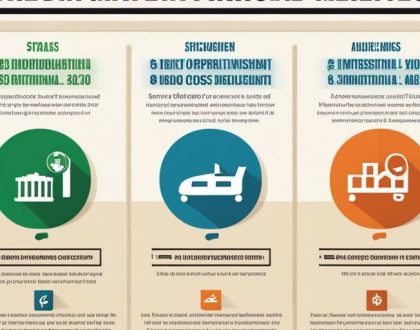Malta’s Economy: Q2 2023 GDP Growth

Malta, a picturesque Mediterranean island nation, continues to impress with its economic resilience. The provisional estimates for the second quarter of 2023 reveal a promising surge in the Gross Domestic Product (GDP). In this article, we delve into the key indicators, analyzing the factors contributing to this growth and providing insights into the methods used to calculate GDP. But before we dive into the details, let’s start with the headline figures.
Q2 2023 GDP Growth
The Gross Domestic Product (GDP) for the second quarter of 2023 reached an impressive €4.7 billion, marking a significant increase of €416.9 million or 9.7 percent compared to the same quarter in 2022. This robust growth in GDP is a clear testament to Malta’s economic vitality.
In volume terms, the GDP recorded a commendable rise of 3.9 percent, as reported by the National Statistics Office (NSO) on a sunny Monday morning. These figures suggest that Malta’s economy is not only thriving but also showing consistent strength in the face of global economic challenges.
Production Approach
One of the fundamental ways to measure GDP is through the production approach, also known as the output approach. It assesses GDP as the sum of Gross Value Added (GVA), which is the difference between the value of output and the value of intermediate consumption, along with taxes less subsidies on products.
During the second quarter of 2023, GVA displayed a healthy 5.2 percent growth in volume terms when compared to the corresponding quarter of the previous year. This growth was underpinned by the vibrant performance of Service activities (NACE Sections G to U) and Industry (NACE Sections B to F), contributing 4.0 percentage points and 1.3 percentage points, respectively, to the GVA growth rate. On the flip side, Agriculture and fishing (NACE Section A) recorded a slight negative contribution of 0.1 percentage points.
The growth in Service activities was particularly impressive, with key sectors such as Administrative and support services activities (25.4 percent), Financial and insurance activities (15.4 percent), and Accommodation and food service activities (21.8 percent) driving the expansion.
Expenditure Approach
Another method to calculate GDP is through the expenditure approach, which combines Final consumption expenditure, Gross capital formation, and Net exports.
Domestic demand had a negative contribution of 2.7 percentage points to the year-on-year GDP growth rate in volume terms. In contrast, external demand showcased a remarkable positive contribution of 6.6 percentage points.
Final consumption expenditure increased by 2.9 percent in volume terms during the second quarter of 2023. This increase was primarily attributed to a significant rise of 5.9 percent in Private final consumption, while General government final consumption decreased by 3.8 percent.
Gross fixed capital formation, on the other hand, declined by 18.3 percent in volume terms, mainly due to reduced investment in Transport equipment.
Malta’s international trade also made noteworthy contributions to the GDP growth, with exports of goods and services in volume terms increasing by 2.5 percent and imports of goods and services declining by 1.6 percent.
GDP Deflator and Ad-Hoc Revisions
The GDP deflator, an important economic indicator, rose by 5.6 percent compared to the same quarter in the previous year. This represents a marginal decrease of 0.1 percentage points compared to the year-on-year rate recorded in the first quarter of 2023.
It’s important to note that the Gross Domestic Product for the second quarter of 2023 underwent an ad-hoc revision in national accounts data. Ad-hoc revisions typically occur due to the incorporation of new data sources and methodological improvements, resulting in more robust figures. These revisions may lead to more significant changes than routine revisions.
As a consequence of these modifications, it’s not possible to directly compare the data in this news release with figures previously published. The results for 2018 are now considered definitive until the next benchmark revision.
FAQs:
What factors contributed to Malta’s impressive GDP growth in the second quarter of 2023?
Malta’s GDP growth in Q2 2023 was primarily driven by robust performances in the Service sector, particularly Administrative and support services activities, Financial and insurance activities, and Accommodation and food service activities.
How did domestic and external demand affect Malta’s GDP in the second quarter of 2023?
Domestic demand had a negative impact on GDP growth, with a contribution of -2.7 percentage points, while external demand made a positive contribution of 6.6 percentage points, showcasing the importance of international trade to Malta’s economy.
What caused the decline in Gross fixed capital formation in Q2 2023?
Gross fixed capital formation saw a significant decline of 18.3 percent in volume terms, primarily due to reduced investment in Transport equipment.
Can you explain the significance of the GDP deflator in the context of Malta’s economy?
The GDP deflator is an important economic indicator that measures the overall price change in an economy. In Malta’s case, it rose by 5.6 percent in Q2 2023, reflecting changes in the general price level and inflation.
Why are ad-hoc revisions in national accounts data necessary, and how do they impact economic analysis?
Ad-hoc revisions in national accounts data are necessary to incorporate new data sources and methodological improvements, ensuring the accuracy and reliability of economic statistics. These revisions may result in more significant changes than routine revisions and can affect the comparability of economic data over time.
Recommended Posts

Financial Aspects of Doing Business in Malta
July 26, 2024

The Rise of Digital Banking Solutions in Malta
July 24, 2024




